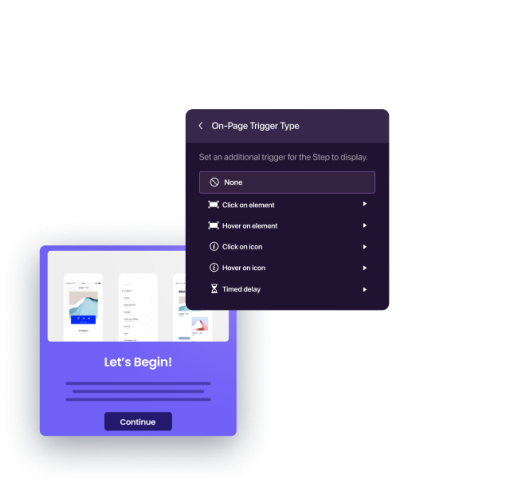Your SaaS company is an orchestra, and product, marketing, sales, and customer success represent different sections of the ensemble.
Who’s directing the group to ensure each section plays in harmony?
That’s product service management for you.
Product service management brings together different teams in your company to meet (and exceed) customer expectations with an exceptional product experience. It involves looking at your product, service, and the market you operate in—as all are crucial for SaaS products.
This article offers a deep dive into the product service management function for SaaS companies and what it involves.
Let’s break down the need for product service management at SaaS companies.
Product service management steers the product roadmap and development efforts to enhance the customer experience.
PSMs act as a bridge between different teams to ensure the product continuously aligns with customer preferences.
Product service management spreads across your product’s lifecycle—from planning and discovery to delivery and evaluation.
Building a PSM function can benefit your business in many ways, such as customer retention, lifetime value, and competitiveness.
What is product service management?
Product service management combines the role of product and marketing teams in a SaaS company to guide product development based on changes in the market. A product service manager actively collects data on market fluctuations and analyzes customer feedback to map user expectations and coordinates with other teams to improve the user experience.
Besides optimizing the customer experience, effective product service management also involves working with developers on:
Major/minor bug fixes
Feature enhancements
Overall product updates
Requests for new features
A product service management function aims to maximize customer satisfaction by integrating product planning, development, and service delivery into one streamlined process.
Product service management vs Product management
Product service management overlaps with product management in many aspects. Both roles involve cross-functional collaboration and are closely tied to customer needs.
However, the biggest difference between the two functions is that a product manager is more concerned with building a product aligned with customer preferences. In contrast, product service managers aim to deliver the product's actual value by building customer relationships.
PSMs bridge the gap between end-users and product teams to create an informed business strategy based on research about market trends and target customers.
What product service management involves
Product service management covers the entire product lifecycle—from planning and development to delivery and performance analysis. Let’s break down each stage in this lifecycle to understand the role of PSMs in more detail.
Research and planning
In the first stage, product service managers help identify problem statements, validate solutions, and conceptualize the product. This stage involves ongoing market research to zero in on the target audience.
Once the target audience is clear, PSMs coordinate with the product team for a goal-based product discovery process to identify the most pressing pain points and common struggles.
They consolidate this research into a product requirements document (PRD) to map out the key capabilities of the product.
Creating a PRD involves evaluating many crucial specifics about your product, such as:
Market analysis
Primary purpose
Business objectives
User stories and use cases
Risks and assumptions
Roadmap and timeline
Budget and resources
While this is a team effort, PSMs play a crucial role in the initial market and user research to develop target personas and learn more about them. Plus, they’ve constantly got their eye on market shifts and economic trends to pivot the development plans.
Design and development
In the design and development phase, the product service management function almost merges with the responsibilities of a product manager.
PSMs dive deeper into market research to find insights about competing companies and customers. They essentially brainstorm and assess ideas to narrow down the most marketable and profitable ones. This translates to a more concrete product roadmap, kickstarting development efforts and prioritizing key features.
Besides, PSMs are actively involved in product development and testing to:
Ensure everything is happening as per the release schedule
Collect user feedback and modify the roadmap to achieve PMF
Product service management is also closely tied to quality assurance. PSMs have to ensure the product meets certain quality benchmarks. They coordinate with beta users to gather feedback, chalk out the scope for improvement, and pitch ideas for implementing this.
Launch and deployment
While product service managers team up with PMs to plan the actual product launch, their primary responsibility is overseeing the deployment process from start to finish.
They align the product, sales, marketing, and customer success teams to make the launch successful.
Throughout the deployment, they connect actively with new and existing users to ensure customers feel confident adopting the product. Naturally, they work closely with the support team and customer success managers to track user queries and identify common roadblocks.
At many companies, PSMs identify market opportunities and strengthen their marketing function. They contribute to the process of defining product positioning + messaging and designing growth campaigns.
Service delivery and support
The most important goal for all product service managers is overseeing service delivery. Service delivery for product companies covers multiple aspects, including but not limited to:
Security and compliance
Service Level Agreements
Performance management
Integration and customization
A product service manager coordinates with different teams to make this delivery process seamless and error-free. They continuously test, develop, and ship capabilities to keep customers happy and drive adoption.
They also implement support protocols and incident management workflows to effectively handle product bugs/issues. The goal is to minimize friction and fix problems at the earliest.
During this phase, product service management focuses exclusively on user feedback and optimizes the experience for higher customer satisfaction.
Performance measurement and analysis
Building a product without market analysis and performance checks is the same as growing a garden without regular maintenance. You're bound to hit some snags along the way—failing to activate customers, not embracing market trends, etc.
That’s why product service managers take care of your product’s performance with regular assessments. They rely on:
Actively tracking product KPIs: PSMs identify the most important product metrics relevant to your business goals and analyze these regularly. Some of the most common metrics are monthly recurring revenue (MRR), customer lifetime value (CLV), and customer acquisition cost (CAC).
Analyzing product usage data: They monitor user behavior to understand product adoption and customer satisfaction. This means digging deeper into in-app behavioral data points like session length, feature usage, active customers, etc.
Collecting customer feedback: They talk directly with the customers to identify the gaps and opportunities for your product. This involves in-product surveys, interviews, reviews, feature requests, community conversations, and more.
Performing A/B testing: They also run A/B tests to examine the effectiveness of different aspects within and outside your product. Think UI elements, pricing structure, feature sets, tooltips, and everything in your product experience.
This is another area where product service management resembles product management and works in tandem to remain competitive in fluctuating markets.
Continuous improvement and innovation
Introducing innovation in the product roadmap is an inevitable part of every PSM's responsibilities.
Since product service managers are closely connected to internal and external stakeholders, they're perfectly positioned to introduce plausible and profitable ideas in the product’s lifecycle.
They adopt an iterative approach to build high-ROI product strategies aligned with market trends and customer preferences.
To do this successfully, PSMs must constantly understand user pain points, identify product usage patterns, and use first principles thinking to propose unique solutions. It's an ongoing process to boost the company's profits and product success.
5 Benefits of good product service management
If you're questioning whether you need product services management for your business, we'll help you make an informed decision.
Here's a list of top reasons why developed companies benefit from a PSM function.
1. Higher retention and loyalty
Good product service management is about fulfilling customer needs with a perfect product through continuous iteration and new features. When PSMs achieve this crucial goal, they set your company up for higher customer satisfaction and long-term loyalty.
This drives retention for your business, even in competitive or poor market conditions. That’s because happy customers are bound to stick with your company for the long run.
2. Reduced churn
Product service managers can significantly reduce customer churn by focusing on building long-term relationships with customers. They deeply understand customer needs and collect effective feedback to make continuous product improvements.
What's more, they also pay special attention to customer service to deliver an exceptional user experience. The result? Happy and healthy customers with no likelihood of switching to competing companies.
3. Upselling and cross-selling opportunities
While retention and churn go hand-in-hand, PSMs can also increase sales with personalized upsell and cross-sell offers.
Since they have a deeper visibility into every customer's behavior, use cases, and workflows, they can coordinate with sales functions to pursue upselling and cross-selling opportunities. This way, they're keeping customers happy and leveling up the company's profit margins—a win-win!
4. Customer insights for product improvement
30,000 SaaS companies are competing to get in front of their buyers—and this number is constantly on the rise. Add to this competition all the market shifts, and you’ve got a bigger challenge to handle.
Continuous product improvement is the key for companies to weather the harsh market conditions and remain competitive.
As PSMs are constantly aware of changing customer preferences, they can adjust the product roadmap to accommodate these expectations. They help product teams make strategic pivots without compromising the existing strategies.
5. Better efficiency and cost saving
An obvious benefit of adding product service managers to your team is the savings resulting from focused and informed product development. When you know exactly what your target customers need, you don't waste resources building irrelevant features.
Not just development, this focused strategy can also save big bucks for marketing teams. They won't spend unnecessary resources chasing the wrong messaging and target audience.
Drive success through effective product service management
Product service management is an underrated but necessary function for every product company—if not the role, then at least the functions. It’s your best bet at creating the perfect user experience that drives adoption, boosts stickiness, and builds brand loyalty.
PSMs can use a powerful tool like Chameleon to deliver in-app guidance with product tours, contextual tooltips, and on-demand help articles. These messages make the service delivery more seamless and replace bad friction with good friction.
Sign up for free to see how Chameleon can empower your PSMs.

Build the Perfect UX Fast
Make product service delivery lightening fast with Chameleon's intuitive builder





